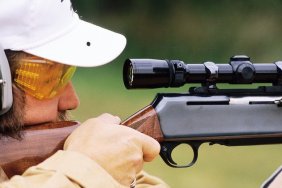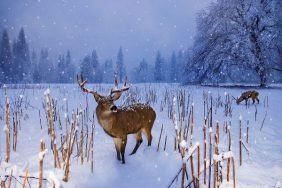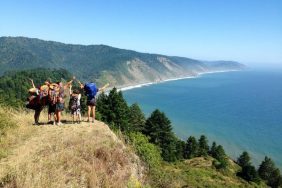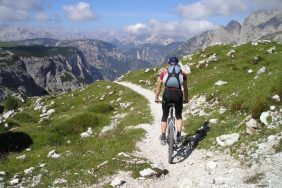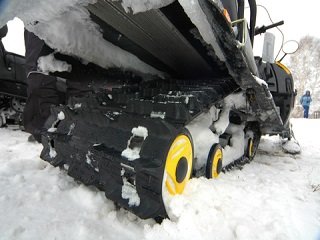 Choices, choices, choices! There are mountain sled tracks in an abundance of widths, lengths, lug heights, rubber hardness, and lug profiles – so how can you be sure you’ve chosen the right ones? Start by evaluating your abilities and the conditions in the area you normally ride to get the best fit for your needs.
Choices, choices, choices! There are mountain sled tracks in an abundance of widths, lengths, lug heights, rubber hardness, and lug profiles – so how can you be sure you’ve chosen the right ones? Start by evaluating your abilities and the conditions in the area you normally ride to get the best fit for your needs.
Shorter tracks help riders maneuver better and make the going easier when you’re in the woods. But keep in mind that shorter tracks have to carry more weight per square inch, so when you’re making very steep climbs or facing deep powder, short tracks are often outperformed by long tracks.
Longer tracks actually may be the smarter choice for less experienced snowmobilers in the mountains, especially if you’re not passing through corridors of trees with a lot of speed. A longer track can help keep the momentum going and allow you to stop and start again, and you can execute a turn without having to keep your foot on the gas. More experienced or aggressive riders usually choose shorter tracks because their speeds are higher so they rarely have stalls. If you’re always riding in powder, a longer track stays afloat better, and long sleds are easier to handle as snow piles up. But if you do get stuck, shorter tracks don’t trench into the snowpack as deeply and are easier to free.
If you’re a large person, longer tracks help big riders maintain their line: they’ll be more consistent in keeping the sled’s front end down. And longer tracks carry heavier weight more smoothly by spreading the load so the track doesn’t dig in. People with a small build might find the long tracks both cumbersome and tiring after a long day in the mountains.
If your area has heavy, wet snow that sets up fast then your sled will need tracks made with a harder rubber for the best traction. Lighter, fluffier snow conditions call for a softer rubber that can grip without trenching.





